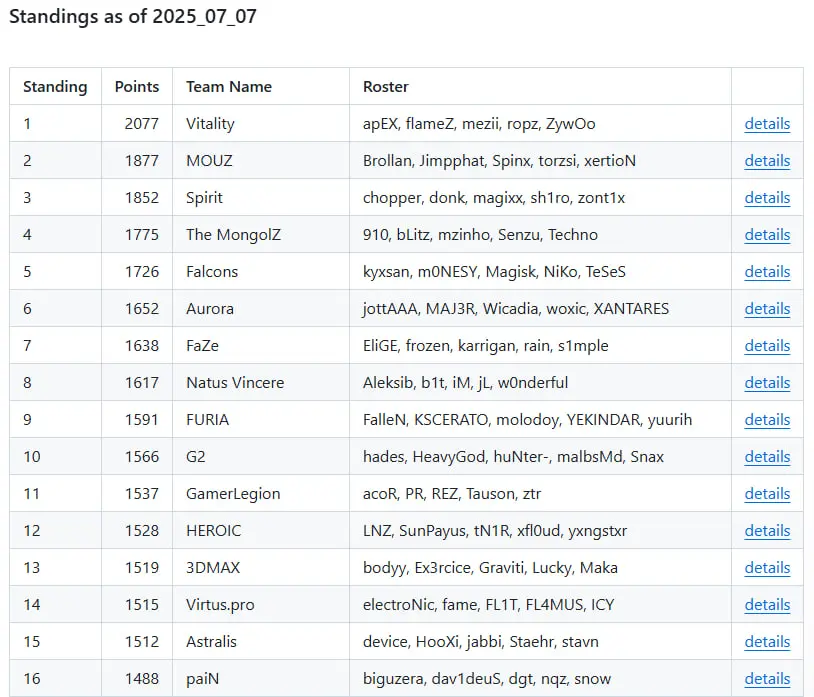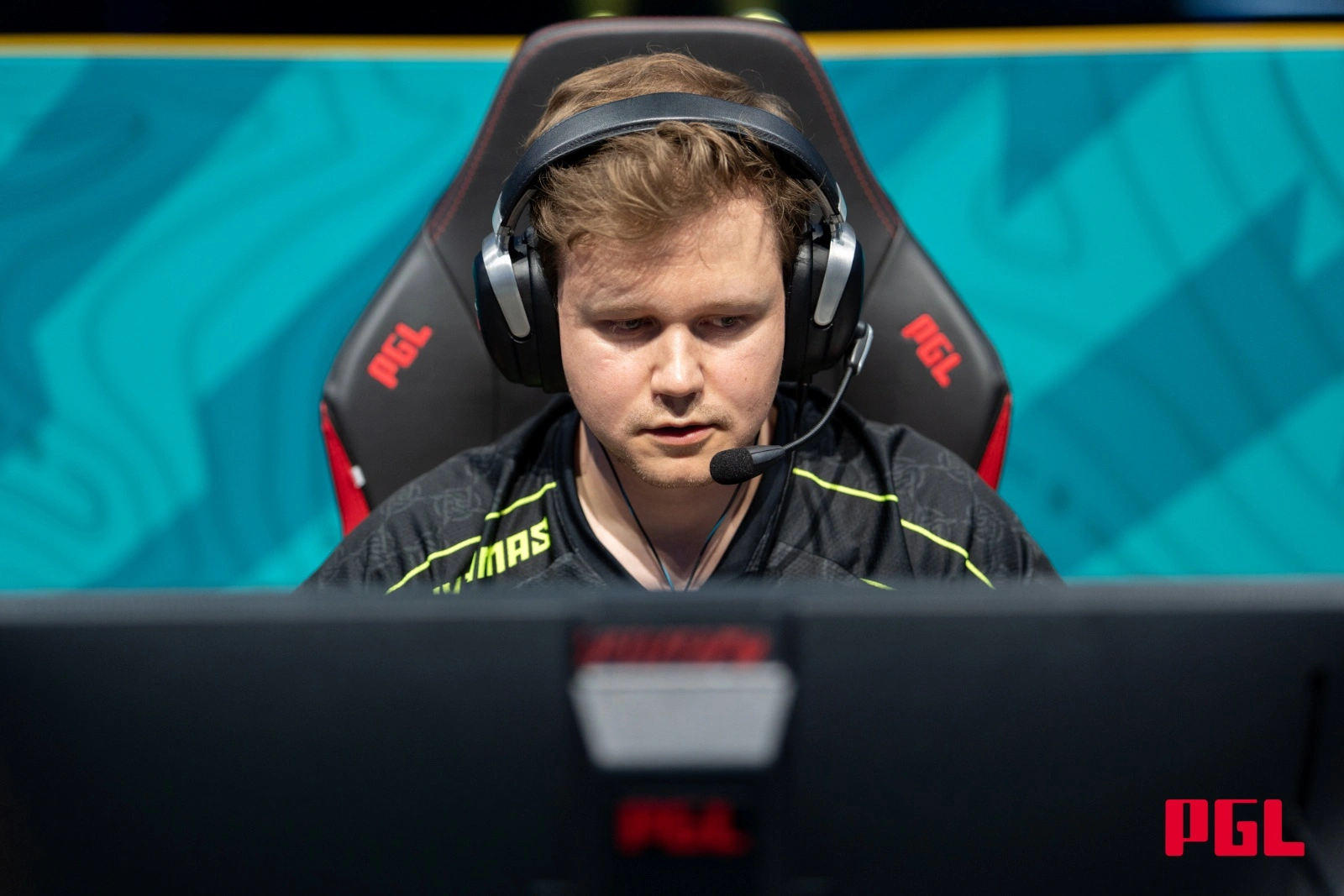
The Valve Regional Standings (VRS) have caused a lot of debate lately. Some fans and players think the system is unfair or too easy to abuse. Others believe it’s the best step toward a real professional structure in Counter-Strike. Let’s look at the main points one by one.
“Valve killed closed leagues but made a new one” – not really
One of the biggest claims is that Valve wanted to remove closed leagues but ended up creating their own. That’s not true. If we look at the next Major, we can clearly see big changes in the list of teams. Many new organizations appeared, and several old ones didn’t qualify.
In Europe alone, there are six new teams compared to the last Major:
- Astralis
- Liquid (now playing in EU region)
- GamerLegion
- NIP
- PARIVISION
- fnatic
In other regions, we also got new names:
- Americas: Passion UA, RED Canids
- Asia: The Huns, Rare Atom
In total, 9 (Liquid just switched the region) out of 32 Major participants are new compared to the previous Major. That proves the system is not closed – teams change, and new ones appear regularly.
However, many events still invite the same teams again and again. The main reason isn’t the VRS itself, but how tournament organizers handle invites. For example, in July 2025, six big events handed out invites almost at the same time:
- BLAST Bounty Fall 2025
- ESL Pro League Season 22
- FISSURE Playground 2
- BLAST Open Fall 2025
- CS Asia Championships 2025
- StarLadder StarSeries Fall 2025
This caused the same teams to get into multiple tournaments automatically, blocking chances for others. That’s a scheduling and invite problem, not a VRS flaw. We can see that the system stays open – the only thing missing is more open qualifiers for big events.

“Teams lose points even after winning” – yes, and it’s normal
Many fans don’t understand why some teams lose points even when they win matches. The answer is in how the ELO-based system of VRS works.
VRS looks at many factors:
- Prize money earned
- Opponent strength
- Importance of matches
- Recent performance
- Number of matches played
If a team beats a much weaker opponent, the gain might be small or even slightly negative. It’s because the system expects them to win – they’ve already reached the “cap” of their score.
Teams can also lose points if rivals around them earn more valuable wins. Or if older results lose weight as new tournaments happen. So yes, it looks weird, but it’s normal math. It just means the team is already at the top and can’t grow much higher unless they win harder matches.

“Teams in the invite bubble can qualify too easily” – example of Virtus.pro
Another complaint is that some teams can reach the Major just because they keep getting invites. Many point at Virtus.pro as an example. Virtus.pro almost qualified for the Major and probably would have done it if not for visa problems before ESL Pro League.
Most of their points came from:
- BLAST.tv Austin Major – 3-0 record in Stage 2 and 2-3 in Stage 3
- FISSURE Playground 2 – 2-3 in the Swiss
- IEM Cologne 2025 – a victory over high-ranked TYLOO
- Playoffs at BLAST Bounty
- Top placement at PGL Astana (over $30,000 earned)
All these results gave them solid ranking and prize money. That’s why their position in VRS is fair – they earned it. The real issue is again with too many invites in one month. Because they got into FISSURE, Cologne, Blast Bounty, Esports World Cup, Blast Open Fall, and ESL Pro League – all with invites – their place was safe. It’s not that the system is broken; it’s that too few open qualifiers exist for new teams to enter these events.

“It’s too expensive to grind LANs” – true, but that’s part of the system
Many smaller teams say it’s too costly to play enough LAN tournaments to earn points. And yes, LANs matter more than online matches – they should. LANs prove real skill under pressure, so Valve gives them more weight. But traveling is expensive.
Example: Fnatic spent a lot traveling to the U.S. for events like Fragadelphia (around $30k). They needed those LAN points but lost time and money. Meanwhile, Passion UA did it smarter.
They knew they needed LAN wins, so they played smaller local LANs instead of flying far:
- DraculaN Season 2
- Urban Riga Open Season 1
They earned 9 LAN wins, enough to jump high in the VRS and qualify for Stage 2 of the Major.
NIP is another great example. They built their roster in early 2025 and started from zero. They played only a few big events – Cologne, Fragadelphia, and StarLadder – and that was enough. In just 8 months, NIP went from unranked to Major-qualified. That shows the system is open and possible if managed right.
Also, you only need 10 recent LAN wins in the ranking system – not 100. So overplaying doesn’t help. Quality matters more than quantity.
How to fix the main problems
The biggest real issue is how invites are given. Too many are handed out at once, and too few open qualifiers exist.
A better system could be:
- 50% of teams get direct invites
- 25% get the closed qualifiers invites
- 25% go through open qualifiers
That would let new names appear more often and make the scene more alive.
Another idea is to bring back the MRQ (Major Ranking Qualifier) system used before. For example:
- 75% of Major slots go by VRS
- The last 25% (4 slots in Europe) are decided in a special LAN event between places 13–20
This keeps top teams safe from random BO1 losses (like GamerLegion, or Astralis before) but still gives others a real shot.
The Valve Regional Standings system is not perfect – but it’s moving Counter-Strike in the right direction. It’s more open, more data-based, and rewards consistent teams, not just lucky runs. Most of the criticism comes from people who don’t understand how the ranking really works or don’t want to learn it. It’s not broken – it’s just different. And it’s building the path toward a more professional future for Counter-Strike.
Source
youtu.be










No comments yet! Be the first one to react